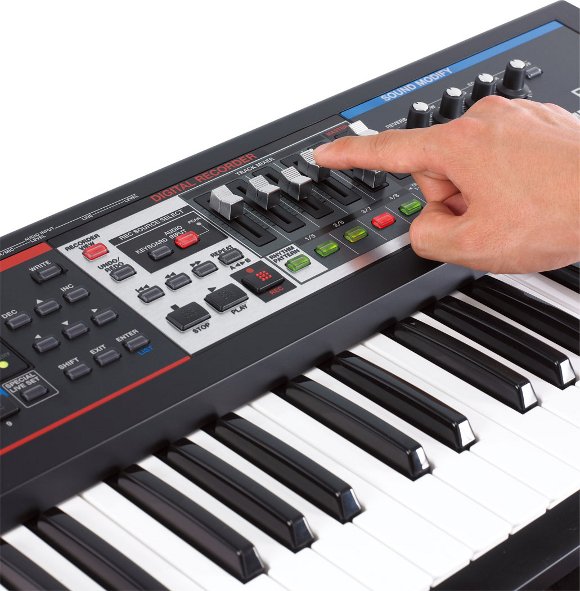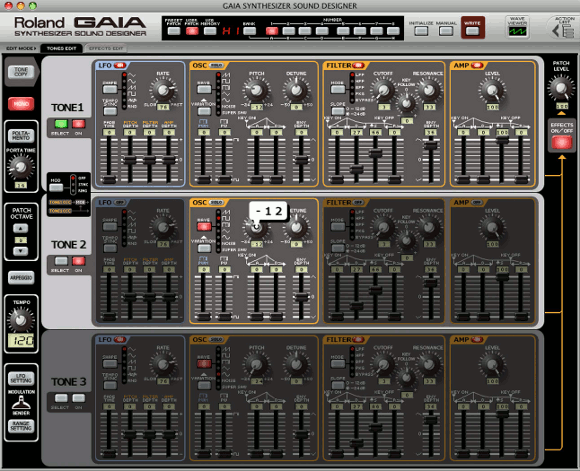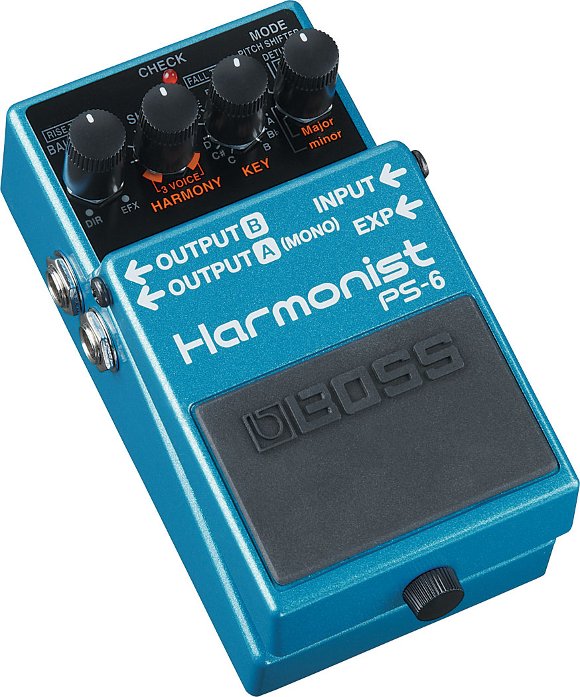
Roland dropped a slew of news announcements today, from new keyboards to software. There’s a new JUNO-Gi, which takes Roland’s economical synth workstation and adds multitrack recording and BOSS effects. The virtual piano lineup has all been remade in the image of the V-Piano, with more realistic sampling tech. And there’s a set of offerings as broad as what we’re accustomed to seeing at trade shows, including one nice-looking harmonic stompbox.
Here are the highlights, focusing on what you need to know.

The JUNO that Records
A keyboard workstation, multitrack recording, and BOSS effects, mobile at just over a grand
The JUNO-Gi is the biggest headline here. Built on the JUNO-G, already a slimmed-down rendition of the Fantom in a much cheaper, more compact package, the Gi is a mobile, multi-function workstation at the recession-friendly price of US$1199. It’s a pretty complete all-in-one offering that manages to be cheap and mobile while still cramming in a lot of functionality:
- Battery-powered option.
- Built-in 8-track digital recorder (64 virtual tracks.
- Dedicated mix faders, rhythm machine track, and recording onto a standard SD card (up to 32 GB cards.
- Built-in USB audio and MIDI interface when you’re connected to a computer; SONAR LE bundled.
- Rear-panel XLR mic (thank you, Roland!), guitar, and line inputs.
- Built-in BOSS-GT guitar effects, vocal processing.
To me, the JUNO-Gi looks like a big winner for those who want an all-in-one keyboard workstation rather than a computer when they’re on the go, especially with the addition of real ports, faders, and guitar and vocal effects. And there’s definitely something to be said for that kind of distraction-free workflow.
For background, you can read my 2007 review of the JUNO-Gi’s “-G” predecessor for Keyboard Magazine; I lamented the fact that the “JUNO” name doesn’t really apply in terms of the sound generation, but otherwise found an affordable, balanced keyboard with a friendly front panel. In fact, I really prefer these designs to some of the bigger flagships; to me, it’s like driving a sporty hatchback instead of a lumbering SUV.
Roland Juno-G [Keyboard]
I said at the time – really doubly true now with the addition of BOSS effects and multitrack interface and recording capability:
Despite its price and retro styling, the Juno-G really is a “Fantom-Xpress.” It’s got the processor and sound engine from the pricier Fantom-X line, minus some of the extra bells and whistles. You still get Fantom-class sounds, a multisampled grand piano, compatibility with Roland’s SRX expansion boards, onboard audio and MIDI recording and editing, lots of effects, and a powerful arpeggiator. That makes the Juno-G an unusually feature-packed workstation relative to other budget keyboards.
See also our CDM Q&A on the 2.0 update to the JUNO-G

Digital Pianos Go SuperNATURAL
The other story Roland is pushing is the switch of its digital pianos to a new set of sampling technologies it calls SuperNATURAL. It appears to be a big leap forward for Roland’s pianos, and given the success of the V-Piano, for digital pianos in general.
Roland boils down the technology to three techniques:
1. It’s 88 keys of stereo multi-sampling – no zones.
2. Via tech borrowed from Roland’s V-Piano, it promises smoother transitions between dynamic levels.
3. The decaying tone isn’t looped.
You can watch a video explaining the techniques. (Does anyone else find Roland’s promo videos seem like they fell through a time warp from the 80s? No matter – it’s how the piano plays that counts.)
Now, some of the comparisons Roland makes relative to software piano instruments aren’t quite as fair – a couple of instruments, through clever sampling and/or modeling, do get this right in software. But it is more unique in hardware.
There are four new digital piano products with SuperNATURAL sounds in them. Two of them you probably don’t care about; they’re geared for the home/education market and have notation views built into the music stand:
HPi-6F
HPi-7F
— I’m guessing CDM readers would rather get a keyboard they like and then prop an iPad on the music stand. (Or use this magical technology called paper.)
There’s also the FP series, with built-in speakers:
FP-7f couples the new sound tech with a redesigned keybed. It also adds looping and mic input and harmony effects as new features. US$2190, unless you want it in white, in which case it’s US$2299. Don’t ask.

The keyboard with the new tech most likely to appeal to readers of this site is this:
RD-700NX, the upgrade to Roland’s previous flagship stage piano. As with the FP, this model adds a looper, a vocal mic input with harmony effects, and a new “PHA III Ivory Feel-S Keyboard with Escapement” keybed. There’s also a new, larger LCD screen. US$2999.
The RD-700NX works nicely as a MIDI control keyboard as well as a standalone stage keyboard, so it could be one to watch. I’ll be honest: the Roland action on these keyboards, while solid, was never my favorite. I’m curious to see how the new action feels. And you really have to play simulated pianos to know if they’ve gotten the sampling tech right.

GAIA Editing Software
Part of the whole appeal of the GAIA SH-01 synth is that you work on the front panel and not in software. But I like what Roland is doing with the GAIA Synth Sound Designer – if, for no other reason, because it has an oscilloscope view so you can see the waveform. You can record and play back sound creations in Action Lists, a clever new way of working. And you can use it as an editor/librarian app for backing, organization, and storage – a category that made hardware synths more useful and has been sorely lacking.
 d news: instead of providing the app for free, the software, released in October, will list for US$99 (in-store street should be lower). Given the GAIA’s mission of reaching out to new synth lovers, I’d rather see this bundled in box. (Note that this is hardly unprecedented — Moog charges US$79 for their Minimoog Voyager Editor, and a Minimoog owner has shelled out a heck of a lot more cash than a GAIA customer.)
d news: instead of providing the app for free, the software, released in October, will list for US$99 (in-store street should be lower). Given the GAIA’s mission of reaching out to new synth lovers, I’d rather see this bundled in box. (Note that this is hardly unprecedented — Moog charges US$79 for their Minimoog Voyager Editor, and a Minimoog owner has shelled out a heck of a lot more cash than a GAIA customer.)
I’m finishing off an SH-01 review, complete with sound design tips, soon, so if you have any last-minute questions, fire away.

A new, multi-effect BOSS pitch stompbox
The BOSS PS-6 “Harmonist” pedal looks delicious. Effects include three-voice harmony, plus four pitch shift modes:
- Harmony
- Pitch Shifter
- Detune
- “Super Bend,” a brand-new mode with “shift,” “rise time,” and “fall time” (so, in other words, it’s a time-based pitch shifter)
US$241.50 in September.
More New Products
In other Roland news:
The AX-Synth is available in black, though at US$1449 list, you’d have to consider the more affordable Lucina AX-09 if you really need a shoulder keyboard. I’m finishing a review of the latter now.
The C-380 is a luxurious-looking, 2-manual modeled pipe organ. I want one, and an underground lair to go with it. (Yeah, sure, it’s the cliche, but I’ve always appreciated the lifestyle choice.)
Roland also has new CUBE-XL guitar amps, though I’ll try to examine those next to a similar announcement from Vox – it’s a good time to be in the market for inexpensive, busk-ready amps.
The Octa-Capture is a new high-res, USB 2.0 10-in, 10-out computer audio interface. Roland is going toward calling these “Roland” interfaces, instead of “Edirol,” and appears to be pushing the quality of these devices. US$699. Unfortunately, this illustrates that we need an updated USB class spec to support interfaces like this without drivers, at least from what I know; you do need the drivers to run this box, so no driver-free operation and no Linux support initially.
The BOSS ST-2 “Power Stack” is a compact pedal that simulates stack-style tube amps. US$162.
If any of this stuff strikes your fancy, let us know, and we can get questions answered for you.